Vectorization in Haskell
Abhiroop Sarkar
@catamorphic
Superword Level Parallelism in the Glasgow Haskell Compiler
A CUSTOMARY RITUAL
Moore's Law is over :(
Types of Parallel Machines
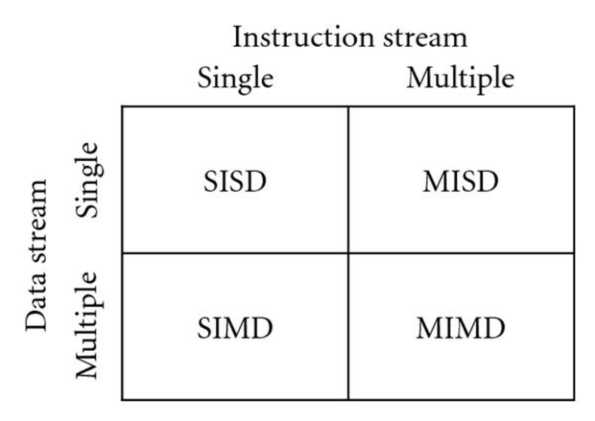
Single Instruction Multiple Data
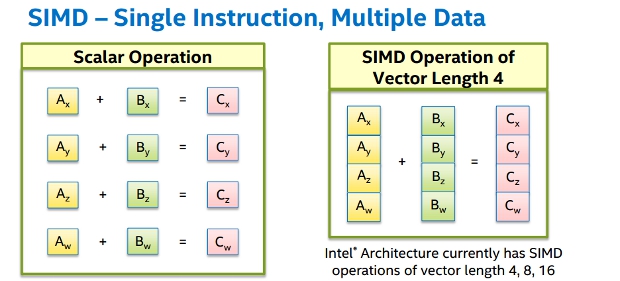
Cray 1 - the first supercomputer to implement the vector processor design
x86 Instruction Set
- Intel
- SSE (Intel P6, 1999)
- SSE2 (Intel Pentium M, 2003)
- SSE3 (NetBurst - Pentium 4, 2004)
- SSE4.1 (Intel Core, 2006)
- SSE4.2 (Nehalem, 2008)
- AVX (SandyBridge, 2011)
- AVX2 (Haswell, 2013)
- AVX512 (Canon Lake, 2018)
- AMD
Compiler Support
- GCC
- LLVM Toolchain
- Dyalog APL
Can a purely functional language support vectorisation?
The question is incomplete...
Can a purely functional language support vectorisation, preserving its original syntax and semantics while being as efficient as low level systems programming languages?
Parsing the previous statement :
- High Performance
- Declarative Syntax
We answer that in 2 steps.
- a low level code generator
- a high level vector programming library
Original Idea
LLVM backend for NESL
NESL : An ML Dialect by Guy Blelloch (CMU) which supports Nested Data Parallelism
Disadvantages
- Compiler written in Common Lisp
- Flattens almost every level of parallelism
- Small prototype language without a great I/O manager
- Hard to debug
Enter Haskell
Glasgow Haskell Compiler (GHC)
State of the art optimising compiler

Where have we made code changes?
- Parser
- Add some new runtime representations
- STG -> Cmm bridge
- Cmm (multiple layers)
- Native code generator (x86 Assembly)
Fundamental Code changes:
compiler/nativeGen/Format.hs
data Format = ...
| VecFormat !Length !ScalarFormat !Width
type Length = Int
data Width = ... | W128 | W256 | W512compiler/nativeGen/x86/Instr.hs
data Instr = VBROADCAST Format AddrMode Reg
| VEXTRACT Format Operand Reg Operand
...
-- number of other instructions like vector move,
-- shuffle, arithmetic, logical x86 instructionscompiler/cmm/CmmMachOp.hs
data MachOp = MO_VF_Broadcast Length Width
| MO_VF_Insert ....70% code changes in compiler/nativeGen/X86/CodeGen.hs
Lots of seg-faults and code reviews later
EXAMPLE : BROADCAST

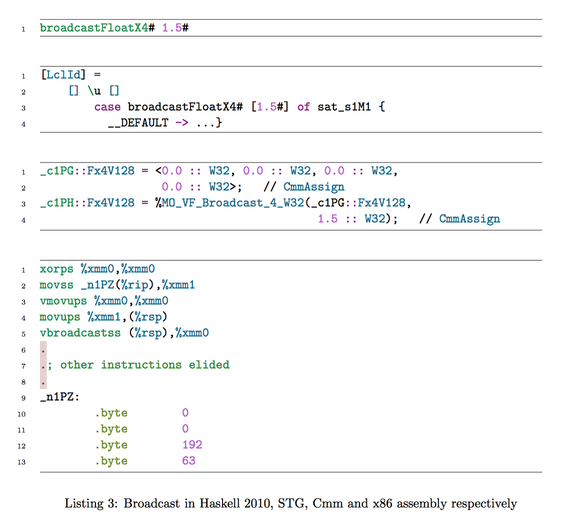
- low level code generator changes
FloatandDoubleSIMD support- redefine integers to support SIMD
The user-level API
-- constructors
packFloatX4# :: (# Float#, Float#, Float#, Float# #) -> FloatX4#
broadcastFloatX4# :: Float# -> FloatX4#
-- destructors
unpackFloatX4# :: FloatX4# (# Float#, Float#, Float#, Float# #)
-- operations
plusFloatX4# :: FloatX4# -> FloatX4# -> FloatX4#
minusFloatX4# :: FloatX4# -> FloatX4# -> FloatX4#
timesFloatX4# :: FloatX4# -> FloatX4# -> FloatX4#
divideFloatX4# :: FloatX4# -> FloatX4# -> FloatX4#SSE as well as AVX support
Previously we had
data Int8 = I8# Int#
data Int16 = I16# Int#
data Int32 = I32# Int#
data Int64 = I64# Int#Now GHC has :
Int8#, Word8#, Int16#, Word16#, Int32#, Word32#, Int64#, Word64#
Example : Vectorizing dot product
This spoils the declarative nature of Haskell!
Imperative languages have powerful vector programming libraries
- Intel Math Kernel Library (MKL)
- Vc (https://github.com/VcDevel/Vc)
- AMD Libm
Lift-Vector
Polymorphic SIMD functions for vector programming
Lift-vector provides two interfaces
- Data.Primitive
- Data.Operations
Data.Primitive
class (Num v, Real (Elem v)) => SIMDVector v where
type Elem v
type ElemTuple v
nullVector :: v
vectorSize :: v -> Int
elementSize :: v -> Int
broadcastVector :: Elem v -> v
mapVector :: (Elem v -> Elem v) -> v -> v
zipVector :: (Elem v -> Elem v -> Elem v) -> v -> v -> v
foldVector :: (Elem v -> Elem v -> Elem v) -> v -> Elem v
sumVector :: v -> Elem v
packVector :: ElemTuple v -> v
unpackVector :: v -> ElemTuple vFrom github/ajscholl/primitive
What does dot product look like with this?
Data.Operations
class (Num a, Num b) =>
ArithVector t a b
where
-- | The folding function should be commutative.
fold :: (a -> a -> a) -> (b -> b -> b) -> b -> t b -> b
zipVec ::
(a -> a -> a) -> (b -> b -> b) -> t b -> t b -> t b
fmap :: (a -> a) -> (b -> b) -> t b -> t b
-- | Work efficient Blelloch Scan
scanb :: (a -> a -> a) -> (b -> b -> b) -> b -> t b -> t bVectorised Containers
- Vector Lists
- Vector Arrays (Shape polymorphic)
Vector Lists
newtype VecList a = VecList [a]A wrapper over plain lists
Vector Arrays
Wrappers around unboxed vectors.

import qualified Data.Vector.Unboxed as U
data VecArray sh a = VecArray !sh (U.Vector a)Shape Polymorphism
Inspired from Repa, Accelerate, Ypnos and other array libraries
data Z = Z
data tail :. head = !tail :. !head
type DIM0 = Z
type DIM1 = DIM0 :. Int
type DIM2 = DIM1 :. Int
type DIM3 = DIM2 :. Int
class Eq sh => Shape sh where
toIndex :: sh -> sh -> Int
...
instance Shape Z where
toIndex _ _ = 0
instance Shape sh => Shape (sh :. Int) where
toIndex (sh1 :. sh2) (sh1' :. sh2')
= toIndex sh1 sh1' * sh2 + sh2'What does dot product look like with the parallel operators?
How are the Data.Operations operators implemented?
ZIP

MAP

FOLD
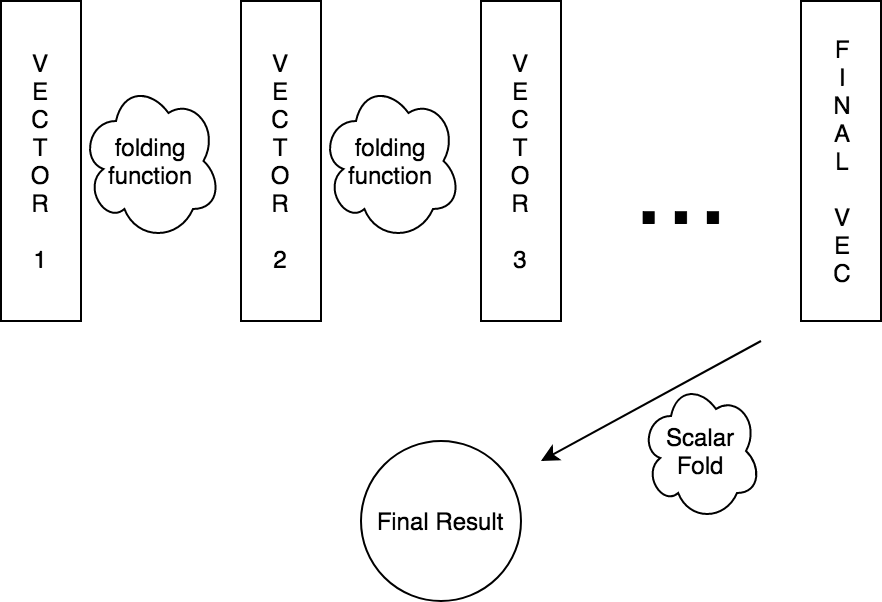
SCAN
scan or prefix sum looks like an inherently sequential operation
> scanl (+) 0 [1, 2, 3, 4, 5, 6, 7, 8]
> [0,1,3,6,10,15,21,28,36]HILLIS AND STEELE SCAN
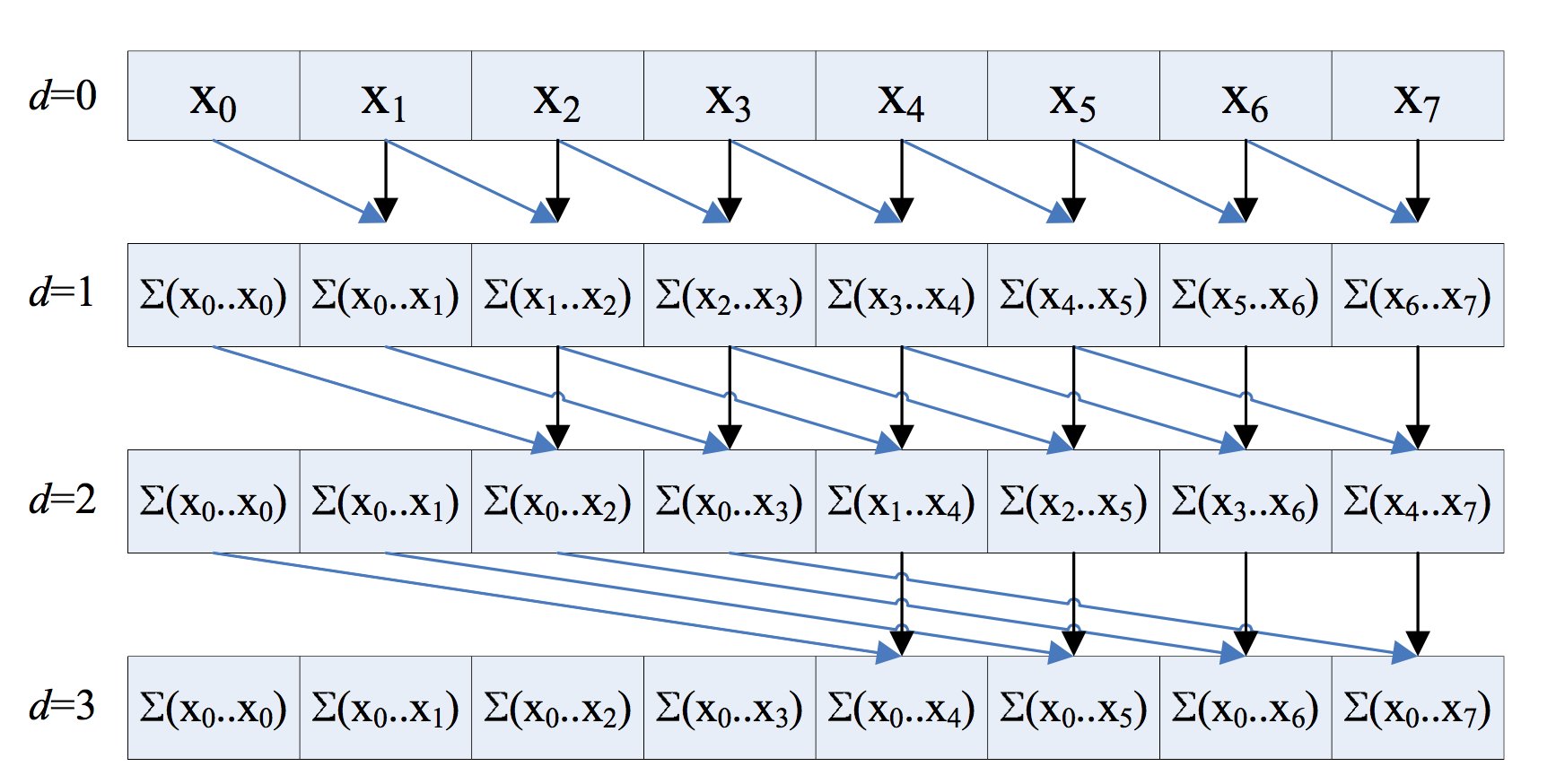
This is parallel but does O(n log2 n) work.
Sequential scan does O(n) operations.
Analysis of parallel algorithms
How long it would take if it were fully sequential (work)
How long it would take if it were as parallel as possible (span)
RECOMMENDED READING
"Programming parallel algorithms" - Guy Blelloch, 1996
Can we have a work efficient parallel scan?
BLELLOCH SCAN
UPSWEEP
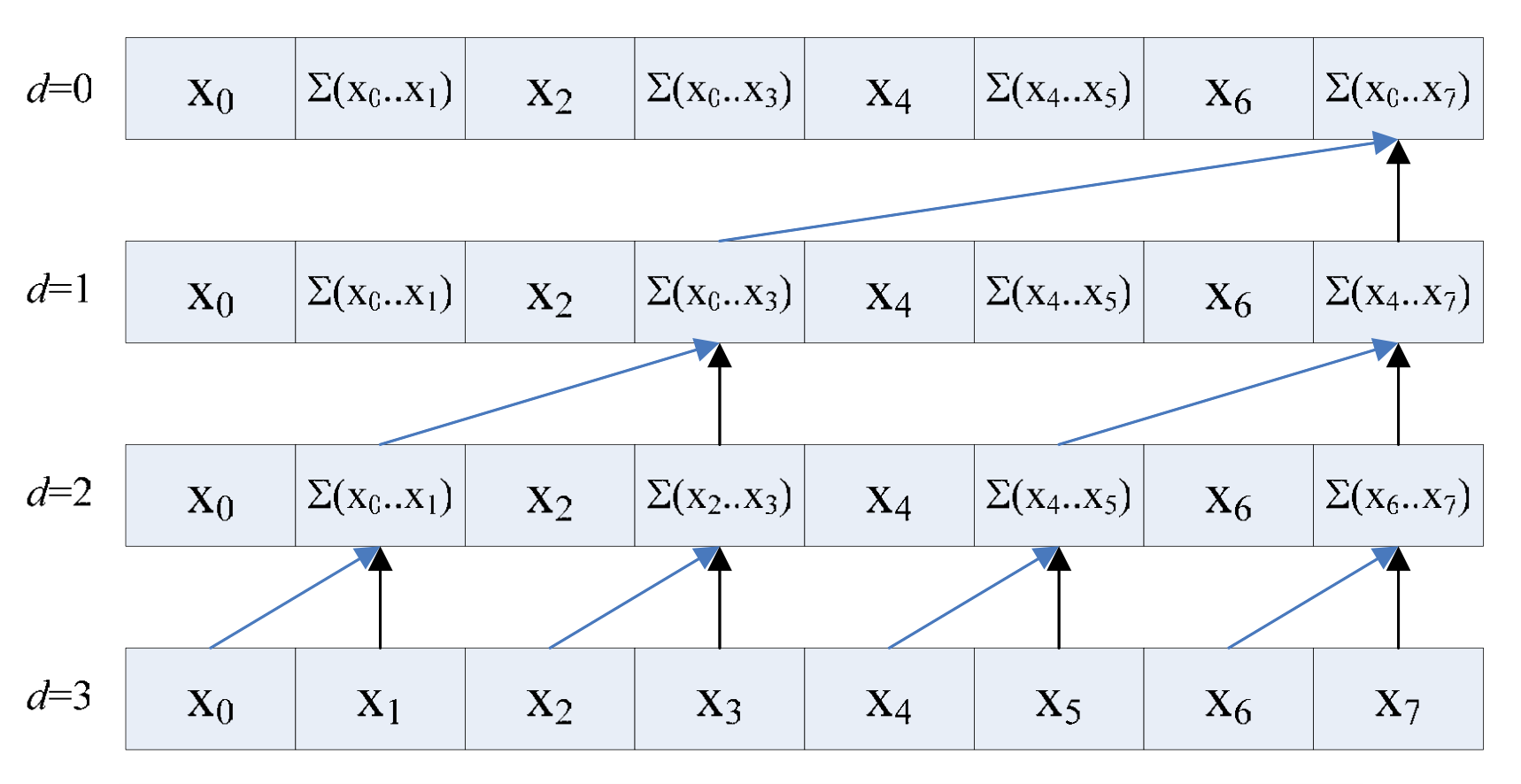
DOWNSWEEP
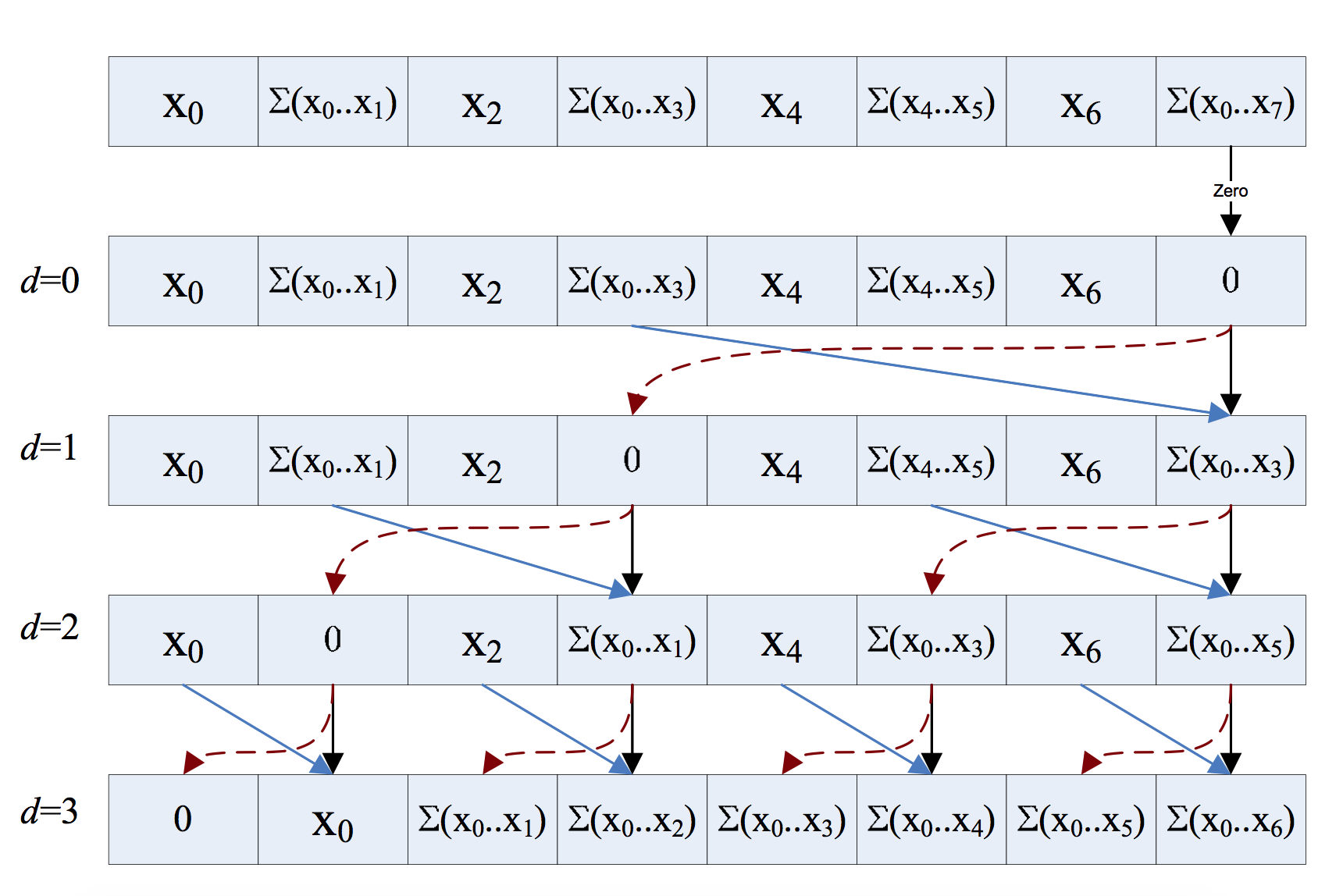
So are scans really that useful?
APPLICATIONS OF PARALLEL SCAN
- Lexical string comparison
- Adding multi precison numbers
- Polynomial evaluation
- Radix Sort
- Implement parallel quicksort
- ...
RECOMMENDED READING
"Prefix sums and their applications." - Guy Blelloch, 1990
Q: So are folds, maps , zips and scans sufficient enough combinators?
A: Maybe
Examples
Good benchmarks
Heavy reads and less write
Pearson Correlation Coefficient


Bad benchmarks
Heavy writes
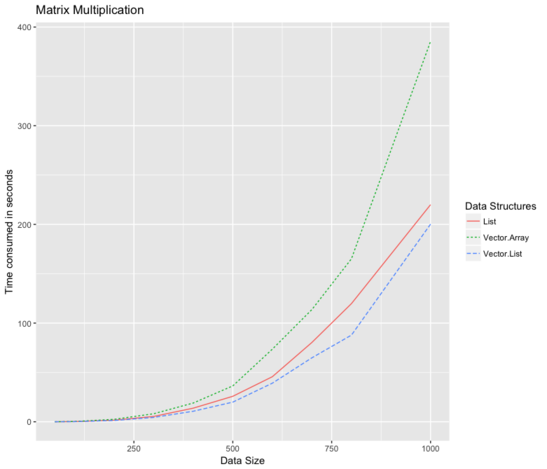
Writes perform better now via thawing and freezing inside the ST monad.
Future Work
- Automatic Vectorisation
- Loop vectorisation
- Throttled SLP algorithm
- An ideal cost model for vectorisation
- Mutable arrays supporting in place writes (inspiration from Futhark)
- More vectorised data structures
- Improving the API of lift-vector
- Alternate IR like SSA inside GHC
RECOMMENDED READINGS
Almost any paper by Guy Blelloch
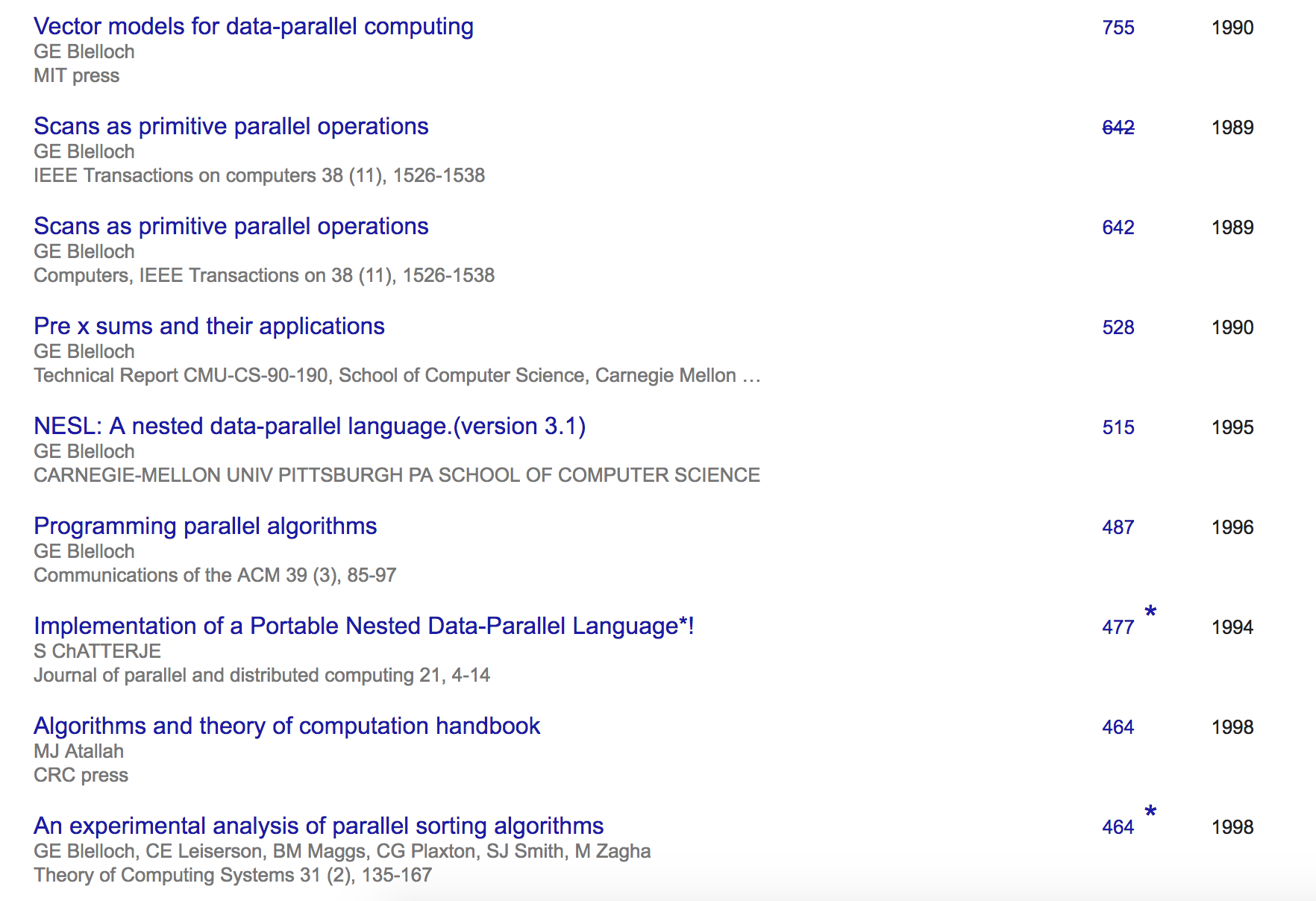
From the Haskell side:
"Automatic SIMD vectorization for Haskell" - Petersen, Orchard, Glew
"Exploiting vector instructions with generalized stream fusion" - Mainland, Leschinskiy, Jones
If you are lazy read my 5k words summary:
Conclusion
Haskell is already a great parallel language!
Haskell could be the state of art in vector programming!
Special Thanks to
- Carter Tazio Schonwald (my GSoC mentor)
- Graham Hutton (my thesis supervisor)
- Ben Gamari (my second GSoC mentor)
- Google for funding Haskell.org as part of GSoC 2018
Looking for PhD Advisors in the field of
High performance functional programming
(^ Not an oxymoron!)
THANK YOU FOR LISTENING
Contact me if this interests you:
Email : asiamgenius@gmail.com
Twitter : @catamorphic